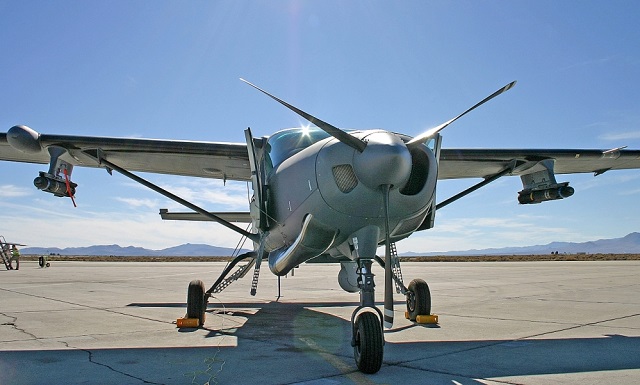The Iraqi government could receive as many as 5,000 general-purpose AGM-114 Hellfire missiles under a foreign military sales deal approved by the US government this week.
If executed, the order valued at between $750 million and $800 million would be one of the largest Hellfire orders ever placed by the embattled nation, which is desperately trying to reclaim territory lost to the so-called Islamic State caliphate.
The weapons are integrated with a number of its military helicopters and fixed-wing attack airplanes, including the trusty Orbital ATK AC-208 Combat Caravan of the Iraqi Air Force.

Orbital ATK delivered three Hellfire-armed AC-208 Combat Caravans to Iraq
Orbital ATK
The deal would come as the US boosts production of the Lockheed Martin-built missile to meet rising demand among coalition partners fighting in the Middle East.
The most recent disclosure indication that numbers were being increased came in a 24 June 2015 contract award to Lockheed for tooling, test equipment and labour to boost output from 500 all-up rounds per month to 550-600, enabling the company to produce up to 7,200 units annually.
According to the latest deal with Iraq, announced 7 January, the government there is seeking AGM-114K, N and Romeo variants of the semi-active-laser homing weapon.

Boeing B-1Bs like the one seen here being refuelled over Iraq were provided air support during the recent recapture of Ramadi.
US Air Force
The announcement comes as the coalition airstrikes against the Islamic State group escalates.
Yesterday, Operation Inherent Resolve spokesman Col Steve Warren claimed approximately 2,500 enemy deaths by coalition airstrikes in December alone and significant disruption to Islamic State oil production and logistics sites.
“When our airstrikes are coupled with local ground operations, we see ISIL having to react and move around the battlefield, which in turn just makes it easier for us to strike them,” he says.
US Air Force AC-130 gunships and A-10 attack airplanes have played an increasing large role in disrupting enemy oil routes in Iraq and Syria. Videos released by the Pentagon in November show those aircraft attacking dozens of oil trucks as part of Operation Tidal Wave II.
Source: FlightGlobal.com
















